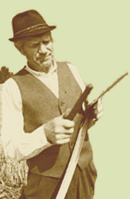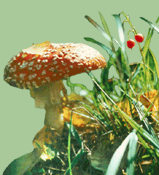The success and flatness of the capital city
Mari Jüssi warns: the spread of the urban lifestyle around Tallinn destroys valuable landscapes, absorbs a ruthless amount of natural resources and causes serious social and economical problems. Although it might seem appealing to move out of the city and commute to work from the country, this kind of lifestyle actually puts enormous pressure on the city as well as the surrounding areas. Commuting people bring about more private cars, and the town, the center of which is squeezed between Lake Ülemiste and the sea, gets even more overcrowded with traffic. It is the intense traffic that is mostly responsible for the fast degrading life and environmental quality in Tallinn.
Essay: Hometown by Fred Jüssi
Tallinn between Mustkivi and Mustakivi
Jaak Nõlvak introduces the geological sites of interest of Tallinn from denudations to erratic boulders. The most outstanding geological feature is definitely the Toompea island-like height. It is a relic of the Baltic Klint. There are also noteworthy primeval valleys in the town, as well as mineral resources.
Eesti Loodus enquires
Kalev Aun writes about the Environmental Investment Center that recently celebrated its 5th birthday.
Aino Aaspõllu considers the promise of the board of Tallinn to plant five new trees for every felled one.
The water supply of Tallinn: history and nowadays
Tiia Pedusaar and Arvo Järvet take a look at the towns water resources. Tallinn is located on the area naturally rather poor in water. The town is supplied with water from Lake Ülemiste, which in turn takes its waters from other surface waters. There are two major water reservoirs and several canals backing up the supply for the town. The authors also focus on the water quality of Lake Ülemiste.
Urban nature under protection
Piret Kiristaja gives and overview of the larger and smaller protected areas within the city limits, as well as of protected boulders, springs and old trees. There are two landscape protection areas: that of the Pirita River valley and the Mustamäe-Nõmme protected area created only in 2004. Numerous lovely and rather old parks are protected, too. The article is supplied with a poster-size map of all protected objects of the capital city.
Interview: What happens if the forest people build a town of stone?
Indrek Rohtmets has interviewed Andres Tarand, a geographer, a former Prime Minister (1994-95) and Minister of Environment (1992-94).
Tallinn is known for it cafes and the Zoo
Mati Kaal invites us the visit the Tallinn Zoo again and again to witness the improving conditions of the residents of the zoo. The Tallinn Zoo is rather young: founded 66 years ago, and moved to the current location 22 years ago. In recent years many new complexes have been opened and the zoo now has a rather modern look.
The Iru Ämm (Mother-in-Law) and Lindas Stone
Mari-Ann Remmel looks at the folk stories related to two well-known places of Tallinn. Both stones have been sacred places and written into the Estonian literature by Fr. R. Kreutzwald.
Has the Lindas Stone changed its shape?
Jaan Remmel has found out that the current Lindas Stone has a much different look from what he remembers from his childhood.
European rarities in Estonia: Sandy Pink
Eva-Liina Tuttelberg describes the rare subspecies of the Sandy Pink (Dianthus arenarius L), which also grows in Tallinn.
The boulevards and parks of Tallinn
Heldur Sander thinks over possibilities to enjoy greenery of Tallinn also in the future. Many of the old parks and trees are rather old; the pressure from housing, parking and traffic impairs the conditions for trees; often the felled trees are not replaced by new ones.
Paljassaare, a treasure island in Tallinn
Eet Tuule and Ranno Puumets present one of the most interesting bird area of Estonia, located only 5 km away from the Tallinn city center. For decades, it was a military area closed for public. Nowadays the survival of the unique valuable nature depends on the good will of the citizens and real estate developers.
On the Mäeküla Klint and in front of it
Andres Tõnisson takes the reader to an unpopular and unrecognized area known also as Astangu. In 1916-17 the ammunition storage for the marine fort was founded in the area. There are several tunnels and neglected warehouses in the area, as wll as some karst phenomena and some rapids. The escarpment is protected since 1997 as an architectural site.
| 

![[IN ENGLISH]](images/gb.gif)





